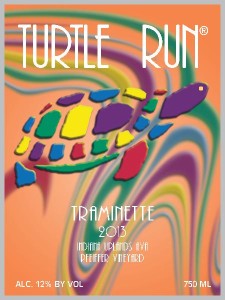Arrested Fermentation Puts Sugary Wine Behind Bars
This article is sponsored by Scott Laboratories. For more information on their tartrate stability product offerings, please contact Scott Labs at 800-821-7254 or send an email to info@scottlab.com.
Sweet and off-dry wines are popular products for Midwest wineries. Wines with residual sugar (RS) can be made using a few different techniques. Common practice in the Midwest for producing sweet wines is to add sugar or reserved juice to a dry wine prior to bottling. While this works well in many situations, it can lead to poorly balanced wines due to the heat of high alcohol.
Many varieties like Frontenac gris, when fermented dry, can reach alcohol levels above 14%. This can create the perception of heat on the palate which may not work well for slightly sweet wines. One remedy to this scenario is to use the natural sugar from the already high brix must as the sweetener by arresting the fermentation.

Turtle Run Winery in Corydon Indiana makes a Traminette wine with 1% residual sugar by controlling fermentation.
Arrested Fermentation
Arresting fermentation is the intentional act of stopping an active fermentation before dryness. If a fermentation stops on its own and you wish it had not, then it is a stuck fermentation. To be successful in this practice you will need to be able to control the temperature of fermentation and keep the wine cold after fermentation until bottling.
What follows is a process flow of sweet wine production:
- Once inoculated, maintain a slow and steady fermentation rate. Manage, or attempt to manage fermentation rates, by adjusting temperature. Start with a fermentation rate of 1 to 2 Brix per day and begin to lower temperature and slow the speed of fermentation as the target sugar level is reached. Getting total stoppage of yeast at a very specific target is difficult. Pre-bottling sugar adjustments may still be required to hit a specific sweetness level.
- Add SO2 to the wine once the target is achieved. Maintain, at the very least, a 0.8 molecular level of free SO2. A higher level may need to be used to stop the fermentation. Be sure to taste the wine to avoid excess SO2 on the palate.
- Rack the wine after much of the yeast has settled out of solution. Exercise caution as there will be a high level of dissolved CO2 with this type of fermentation. The foamover threat is quite real. Be further cautious to not pick up oxygen during transfers. After initial racking and sufficient yeast dropping, perform any fining and cold stabilization. Rack and filter the wine off of tartrates.
- To prevent fermentation, keep the wine cool at all times, and maintain proper SO2. Reduce yeast populations through racking, fining, and filtering.
- Prior to bottling, make final sweetness adjustments and sterile filter. Sorbate can be used if there are concerns about the sterility of the bottling line.
Analysis along the way:
- Monitor pH and SO2, maintain appropriate molecular SO2 levels.
- Monitor volatile acidity: Keep an eye and nose out for yeast stress and spoilage.
- Residual sugar: Brix/hydrometery analysis provides very rough estimates. Perform or send out for detailed sugar analysis. Check sugar levels during storage to monitor for fermentation.
- Potassium Sorbate. Potassium sorbate is not a stable product. The only way to ensure there is sufficient sorbic acid in the wine to help inhibit fermentation is to get it measured. Adding extra as an insurance policy can lead to flavor changes in the wine. The wine should also be filtered before addition. Potassium sorbate is more effective when yeast population is minimal. Always maintain proper SO2 levels when using potassium sorbate.
Happy winemaking.
Nick Smith is an enologist at the University of Minnesota Horticultural Research Center in Chanhassen.


